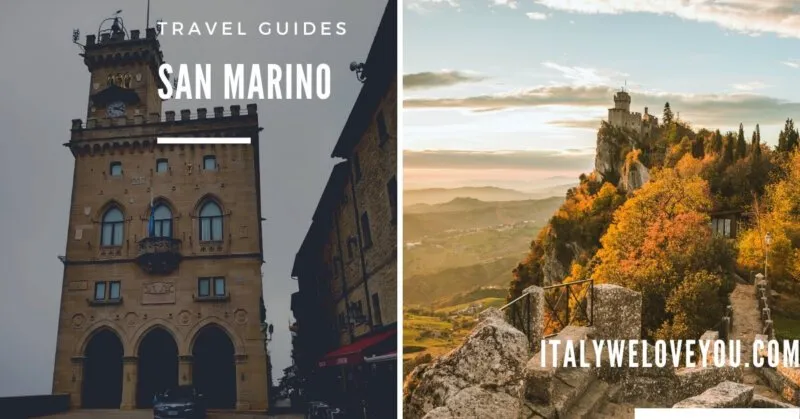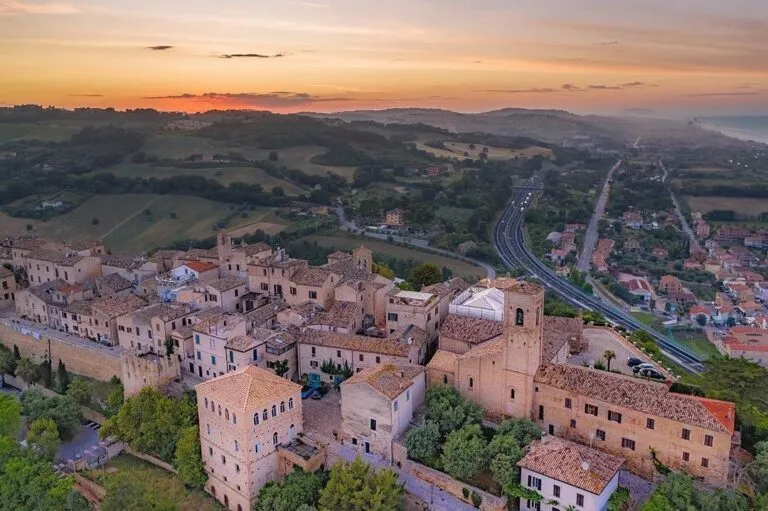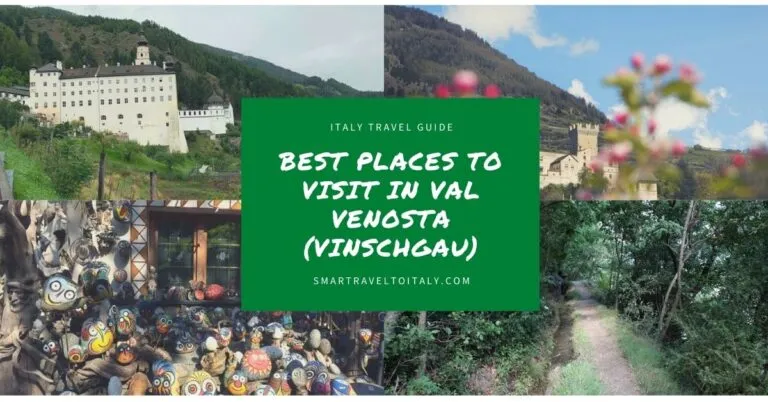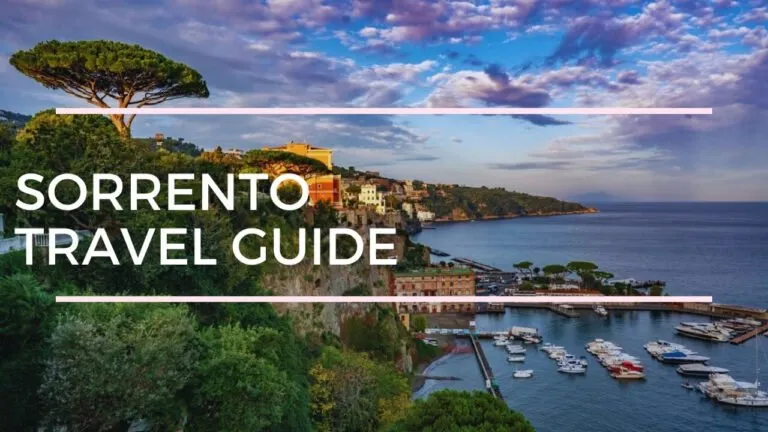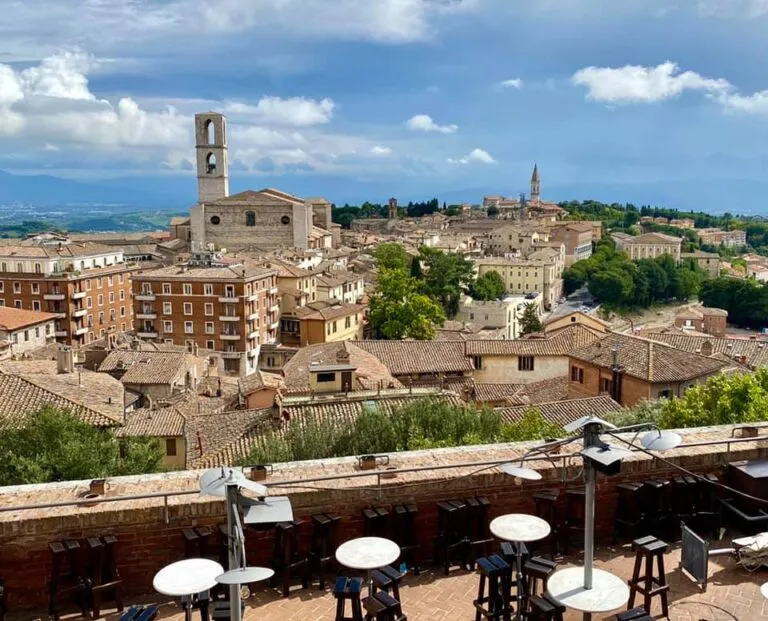9 Best Things to Do in San Marino
According to tradition, the stonecutter Marino founded San Marino, who came from Dalmatia in 257 A.D., to escape the Roman Emperor Diocletian’s Christian persecutions. Here on Mount Titano, he established a community which then became a village and finally a municipality in the 13th century, becoming San Marino from that moment on. It is considered an autonomous and independent state recognized throughout the world.
Today, San Marino is considered the oldest republic in the world. Located in central Italy, between Emilia Romagna and Marche, a few kilometers from the Rimini Riviera, it can be easily reached by car along the Bologna-Ancona freeway to the Rimini-San Marino highway; it can also be reached by train, arriving at the Rimini train station and then taking a bus that will take you to your destination. It would help if you stopped at Piazzale Nazioni Unite in both cases, where you can continue on foot or with the cable car that stops a few meters from the city center.
The Republic of San Marino is a tiny State. That’s why you can grasp the beauty of this place in a whole day and visit all the major places of interest. Its historic center and the imposing Mount Titano have been included among the UNESCO World Heritage Sites in 2008. Its castles, rich in history, museums, monuments, and squares, and the stores and markets create a very suggestive and romantic medieval atmosphere that runs through all the streets and alleys of the city, surprising the visitor in a journey back in time.
Things to do in San Marino
Palazzo Pubblico (Public Palace)

The San Marino Parliament’s seat, the Palazzo Pubblico, is located in the historic heart of San Marino, exactly in the so-called “Pianello,” that is Piazza della Libertà. The structure, inaugurated in 1894, is built entirely of sandstone extracted from Mount Titano. Inside, you can admire trophies, inscriptions, coats of arms, friezes, and busts of illustrious men who have marked the country’s history, among which is that of Carducci. Its greatest treasures are the Council Chamber, where the Republic’s 60 parliamentarians have been meeting since 1848, the bronze statue of the Founder Saint, and the Bell Tower, located to the left of the Palace, which bears the images of Saint Agatha and San Marino. In front of the Palace is one of San Marino’s symbols, the Statue of Liberty, in white Carrara marble.
Three Towers of San Marino

The city’s symbol is the Three Medieval Towers, built for defensive purposes, which are also found on the coins and the Republic of San Marino’s flag. The first tower, called the Guaita, is the largest and oldest of the three. Dating back to the eleventh century, it is a real castle: in fact, inside, it includes a small church and prisons. The second tower, the Cesta, stands at the highest point of Mount Titano and internally houses the Museum of Ancient Weapons with over 700 examples of historical weapons. Finally, by crossing the spectacular Sentiero delle Streghe (Witches’ Path), a very suggestive stone path that offers spectacular views of the entire valley, we reach the “Montale,” the smallest of the three towers. It cannot be visited, but inside there is a prison called “fondo della torre” (bottom of the tower), 8 meters deep.
Piazza Della Libertà

This is the central square with the main buildings of San Marino, including Palazzo Pubblico, also called Palazzo del Governo (the Government Palace). It is the setting of the official ceremonies of the republic and home to its main government bodies. Its shape recalls Palazzo Vecchio in Florence. In front of the palace, there is the Statue of Liberty of San Marino made of white Carrara marble. During the summer, you can watch the guard’s changing, starting from 2.30 pm every 30 minutes. Underneath the square lay the ancient cisterns to collect rainwater and once used as a water reserve.
Basilica of San Marino

Built-in neoclassical style since 1826, where once stood the old sixteenth-century parish church in Piazzale Domus Plebis, one of the first Christian monuments in Italy of pre-Romanesque style. Today the basilica is composed of the classic three naves, and under the high altar in a small urn are preserved the relics of the saint (his skull seems to be inside the Sacra Teca to the right of the altar). The Twelve Apostles and the Redeemer statues by the sculptor Adamo Tadolini, the four Cardinal Virtues, the Regency desk, and the painting called “Noli me tangere” Elisabetta Sirani, representing the Risen Christ.
Cava dei Balestrieri

Opened in the XIX century to extract the stone necessary for the restoration works of Palazzo Pubblico, today this quarry is home to many local traditional events, with crossbowmen and flag wavers. Every 3rd of September, on the occasion of the Patron Saint’s feast day, the famous challenge Palio della Balestra takes place.
Museum of Medieval Criminology and Torture
This museum has a reputation for being one of the most gruesome and disturbing in the world. It has three floors, connected by a spiral staircase. It shows visitors different torture methods used throughout the Middle Ages to cause physical pain and make them confess to crimes, witchcraft, or conspiracies. A gruesome collection of more than 100 torture devices, some of them quite chilling, such as the inquisitorial chair and the stretching bench, or instruments of decapitation such as the guillotine or others of punishment such as the pillory. But you will find many others, testimony to the horrors of human cruelty.
Museum of Curiosities
Decidedly more cheerful is San Marino’s incredible Museum of Curiosities, which houses a collection of over one hundred extraordinary inventions, objects, news, and characters that are both unusual and very real, highlighting human ingenuity and infinite capabilities. Inside, it offers a vast exhibition where it is possible to admire many Guinness World Records oddities, such as the longest hair and nails in the world, the flea trap, the fattest man in the world, or the shortest woman in the world; moreover, in the summer months, tourists can take advantage of a special means of transport, a 1913 Ford coach, which connects the museum to the parking lots further away from the city center.
Shopping in San Marino
San Marino is an excellent destination for shopaholics!
Thanks to slightly lower taxes, you can save money on clothing, footwear, perfumes, cosmetics, electronics, and even musical instruments.
In addition to the outlets and shopping centers, the historic center offers many boutiques with local products: hand-painted pottery, artworks, laces, canvas prints, and lots of food delicacies to eat and drink!
San Marino Foods
The culinary tradition of San Marino offers many typical dishes of the Emilia Romagna region, such as tortellini, strozzapreti, cappelletti served with soup, piadina, and grilled meat. The excellent wines of the area are Brugneto, Sangiovese, and Moscato. I would also suggest you try the truffle liquor Tilus and the herbal liquor Duca di Guelfo. As for desserts, there’s the famous ciambella cake and the cakes Tre Monti and Titano. Another popular dish is polenta (cornmeal mush), served on cutting boards and usually accompanied by a sauce of sage, game, sausages, and grated pecorino cheese. Along the small streets near Piazza della Libertà, you can find many pubs and bars for a drink.
Think your friends would be interested? Share “things to do in San Marino”!
